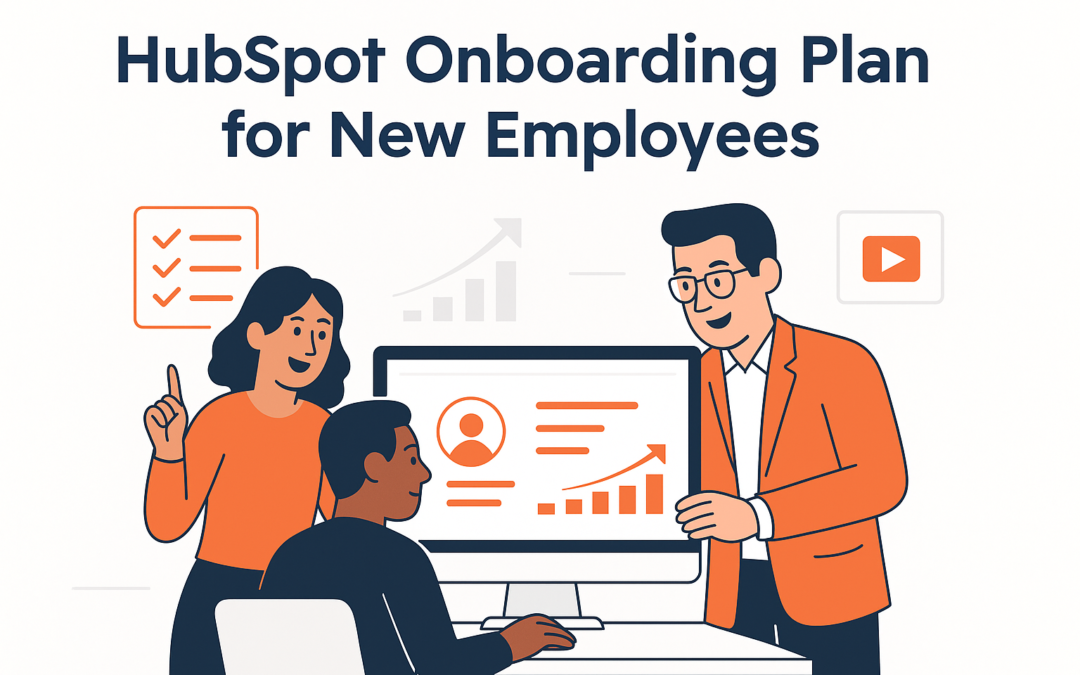Introducing new employees to HubSpot can be exciting but overwhelming if there’s no structured onboarding process. A strong onboarding plan ensures your new team members are confident, productive, and aligned with how your organization uses HubSpot.
In this guide, we’ll walk you through the importance of onboarding, followed by a detailed step-by-step process, best practices, and FAQs, so your team can get the most out of HubSpot from day one.
Why HubSpot Onboarding is Important
HubSpot is a powerful all-in-one platform. Without the right guidance, new employees may:
-
Struggle to use the tools effectively
-
Make avoidable mistakes in CRM data
-
Underuse automation and reporting features
-
Feel lost or disconnected from team workflows
A dedicated onboarding plan solves all of this by building confidence, improving adoption, and creating consistency across your teams.
Step-by-Step HubSpot Onboarding Plan
Here’s how to create a successful onboarding process tailored for your new employees:
1. Define Clear Goals for Onboarding
Before diving into tools or training, clarify what success looks like for a new employee. These goals will guide your training structure.
-
Set expectations for how they’ll use HubSpot in their role
-
Define milestones (e.g., sending the first marketing email, logging first deal, building first report)
-
Outline timeframes for completing training
2. Give Them Access and Permissions
Start by giving access to the correct parts of HubSpot based on the employee’s job.
-
Use permission sets to control visibility and editing access
-
Provide login credentials and enforce security practices (2FA, etc.)
-
Ensure they can access the right Hubs (CRM, Sales, Marketing, etc.)
3. Introduce Them to HubSpot’s Interface
Help them get comfortable with the platform’s layout and navigation.
-
Guide them through the dashboard, menu, and search bar
-
Show them how to navigate between contacts, deals, tasks, and campaigns
-
Explain the differences between Hubs and key areas like workflows and reports
4. Take Them Through Key HubSpot Tools
Now that they’re familiar with the interface, introduce the core tools they’ll use daily.
-
CRM: Contact and company management
-
Deals pipeline: For sales reps
-
Email & landing pages: For marketers
-
Inbox and tickets: For support staff
5. Train Employees on Usual Daily Tasks
Help new users practice tasks they’ll perform regularly.
-
Logging calls or emails
-
Creating tasks and follow-ups
-
Updating pipeline stages
-
Creating and sending marketing emails
6. Provide Role-Based Training
Each department uses HubSpot differently. Customize training for their responsibilities.
-
Sales team: Pipeline, deals, task queues, sequences
-
Marketing team: Campaigns, email, forms, automation
-
Service team: Tickets, knowledge base, live chat
7. Offer Hands-On Practice & Assign Tasks
Give new users a chance to apply what they’ve learned in a safe environment.
-
Set up a sandbox or test contacts
-
Ask them to create dummy campaigns, deals, and workflows
-
Monitor performance and provide feedback
8. Offer Hands-On Practice & Assign Tasks
Support independent learning by sharing useful HubSpot materials.
-
Assign HubSpot Academy certifications
-
Share your internal documentation, SOPs, and guides
-
Recommend blogs, webinars, and user groups
9. Track Progress & Offer Added Support
Measure how far the employee has come and where they need more help.
-
Use onboarding checklists and milestones
-
Review completed certifications
-
Schedule weekly check-ins to review progress
Best Practices for Effective HubSpot Onboarding
Once your onboarding plan is set up, keep these tips in mind:
-
Customize onboarding by role – Don’t use a one-size-fits-all approach
-
Break training into phases – Avoid information overload
-
Create a buddy system – Let new users learn from experienced teammates
-
Encourage exploration – Allow hands-on playtime in test environments
-
Celebrate milestones – Recognize achievements during onboarding
Conclusion
A well-executed HubSpot onboarding plan empowers new hires to make an impact from day one. It builds confidence, reduces training time, and ensures your team gets the full value out of HubSpot’s tools. Whether you’re onboarding sales reps, marketers, or service agents, following these structured steps will set them (and your company) up for long-term success.
FAQs
How long should HubSpot onboarding take?
For most roles, 2–4 weeks of structured onboarding is enough to get productive. Advanced users may need additional 2–3 weeks of hands-on tasks and reporting.
What are the must-complete HubSpot certifications?
We recommend: Inbound Marketing, Sales Enablement, CRM Setup, and Reporting certifications.
Can I automate onboarding inside HubSpot?
Yes! Use HubSpot Workflows and Task Queues to assign learning steps, tasks, and reminders automatically.
Should I onboard freelancers or contractors?
Absolutely! Even short-term users should understand your HubSpot setup and data processes.
How do I measure onboarding success?
Use a checklist, track activity inside the portal, monitor CRM hygiene, and evaluate completion of certifications and hands-on projects.
Ready to unlock the full power of HubSpot?
Let our HubSpot-certified experts help you implement and optimize these hidden tools. From marketing automation to custom reporting, we’ll ensure your setup is tailored for success.

